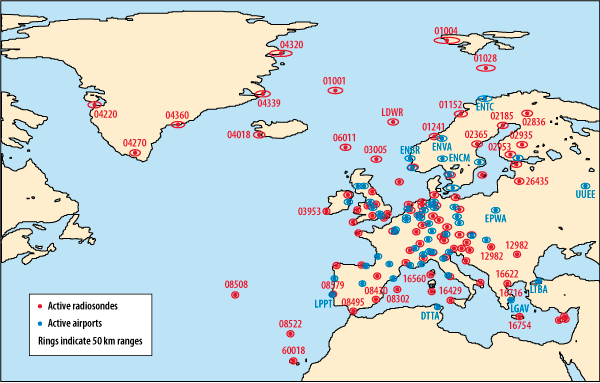

The Scientific Advisory Team of EUCOS, the EUMETNET Composite Observing System, met at ECMWF from 2 to 4 March.
The European upper-air observing network for operational weather forecasting consists mainly of a combination of data from balloon ascents (radiosondes) and data collected from ascending and descending aircraft at the main airports. The figure shows radiosonde locations in red and airports with at least one profile measurement per three hours throughout the day in blue.

There are several places in Europe where data from both observing systems are available in close proximity. Based on results from thorough investigations, the meeting recommended that where such observation locations are within 100 km of each other, one observation location could be removed without degradation to the Numerical Weather Prediction (NWP) forecast performance. Coarser networks with 250 or 500 km separations, however, would lead to degraded forecasts quality, particularly for humidity. These and other findings and recommendations will be presented to the EUMETNET Programme Board for Observations (PB-OBS) meeting in Brest (22-24 March 2010).
The general performance of all EUCOS observing systems was reviewed, and was found to be excellent in 2009. The impact of data from buoys drifting in the North Atlantic had been subject of a specific study and was shown to be of significant benefit for the prediction of the storm Klaus on 24 January 2009. Plans for further EUCOS-funded observing system impact studies were discussed and agreed (relative impact of the space-based and terrestrial data, and impact of targeted observations), involving ECMWF, Met Office, DWD, Meteo France, EUMETSAT and the HIRLAM, ALADIN and COSMO consortia.
